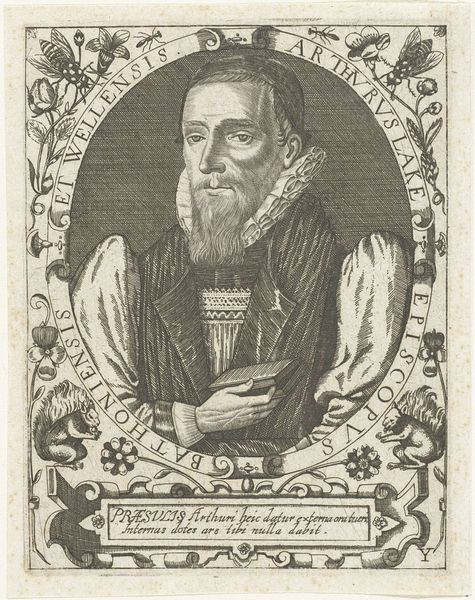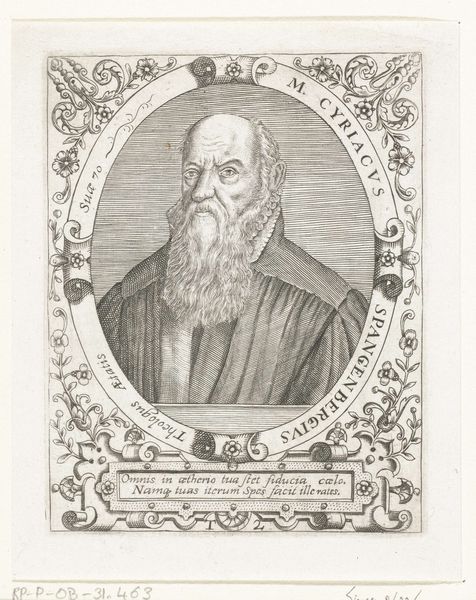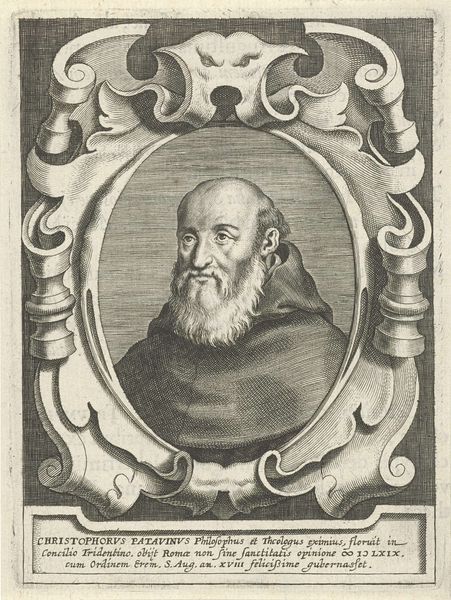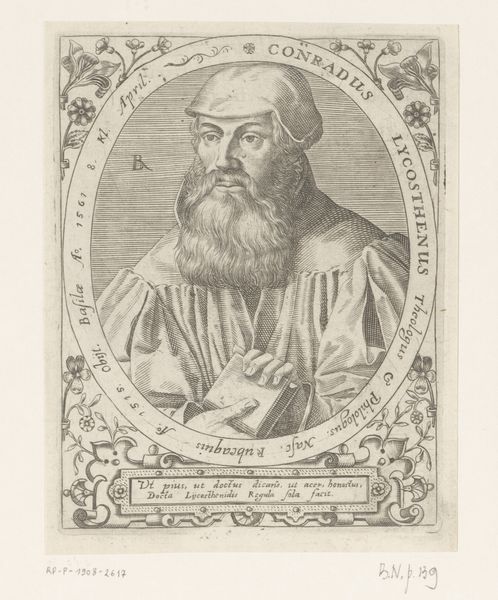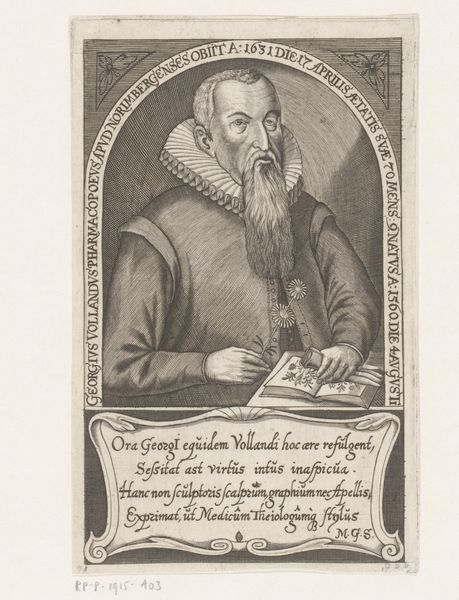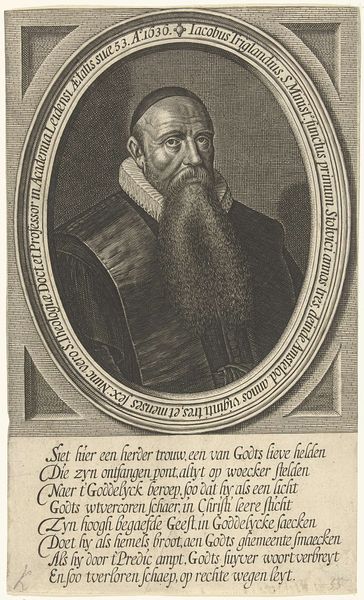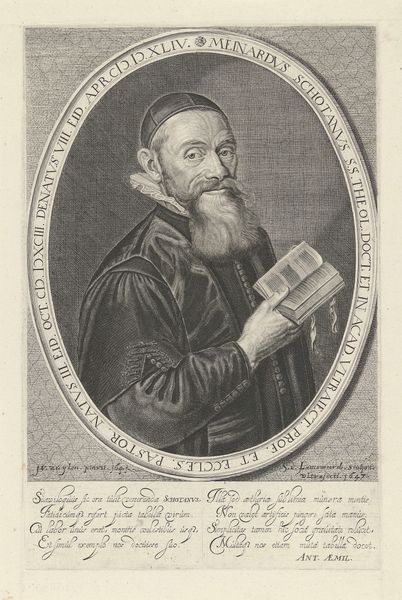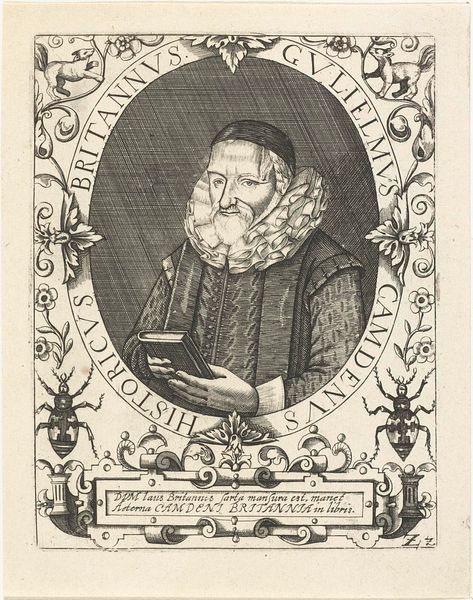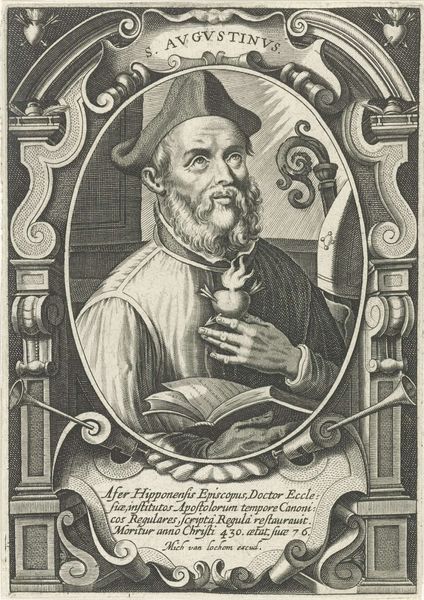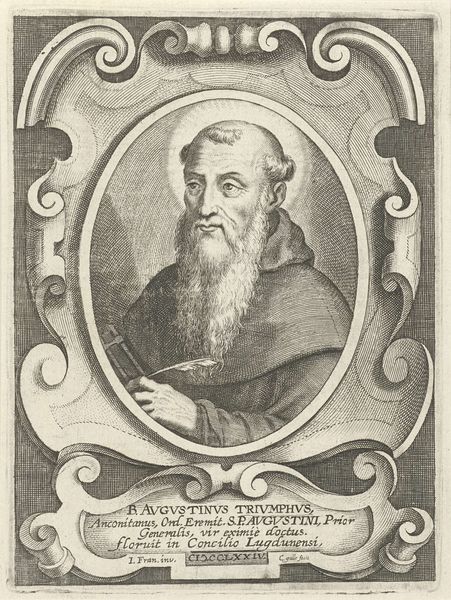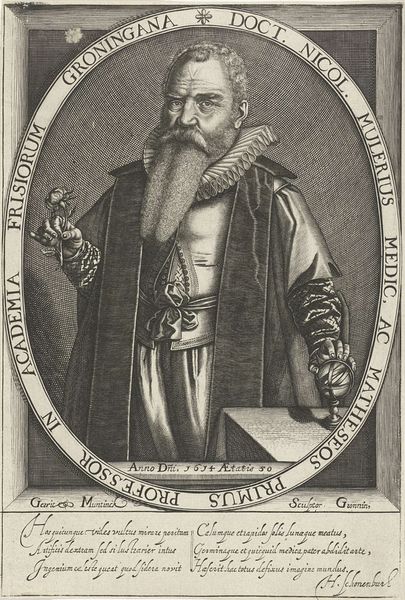
engraving
#
portrait
#
baroque
#
old engraving style
#
limited contrast and shading
#
history-painting
#
engraving
Dimensions: height 189 mm, width 120 mm
Copyright: Rijks Museum: Open Domain
Curator: This engraving, created sometime between 1610 and 1667, presents us with a "Portret van Johann Arndt." The artist is Paul de Zetter. Editor: Immediately, I’m struck by its formality. The framing, the elaborate lettering... it speaks to a certain reverence. The subject seems imposing despite the limited contrast. Curator: That visual rhetoric aligns with Arndt's historical importance. As a Lutheran theologian, he emphasized personal piety over strict dogma. So the limited contrast you see likely arises from the constraints of the engraving medium, not a stylistic choice. Editor: Interesting. The composition directs the eye right to his face, and the light catches his eyes, suggesting wisdom and maybe a hint of world-weariness. The open book adds to this. Curator: It’s also worth looking at the frame, see the griffin and banners, "VIVA FIDES", meaning "living faith" or, “faith that lives." They emphasize not just the importance of faith, but active, living faith in response to Arndt's teaching. The visual field speaks to his persona as a man of faith. Editor: Yes, there's definitely a push and pull between the man and the symbolic apparatus around him. I'm still drawn to his face, it reads as remarkably modern and less stylized than other portraits from the era. It adds dimension to what could easily have become a flat, idealized image. Curator: Precisely. The material and historical context merge. The engraving’s technical limitations become virtues by emphasizing the textures and intricate details. It invites prolonged examination and honors Arndt's profound intellectual legacy within Lutheran tradition. Editor: Thinking about its impact...it prompts me to appreciate the nuance and craft inherent in portraiture from this period. It feels deeply connected to its purpose. Curator: I agree. It is a testament to both artistic and spiritual endeavor of that era.
Comments
No comments
Be the first to comment and join the conversation on the ultimate creative platform.
